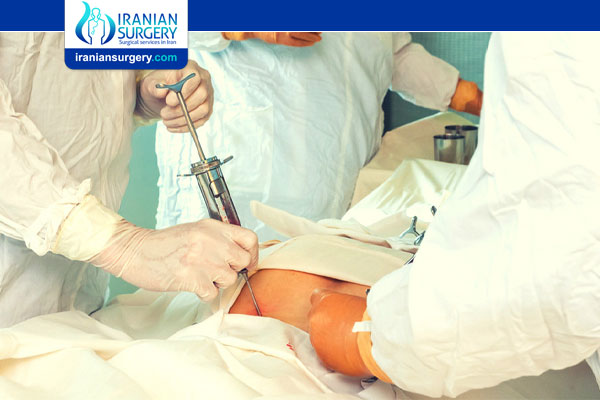Autologous Stem Cell Transplant

What is Autologous Stem Cell Transplant?
An autologous stem cell transplant uses healthy blood stem cells from your own body to replace your diseased or damaged bone marrow. An autologous stem cell transplant is also called an autologous bone marrow transplant.
Using cells from your own body during your stem cell transplant offers some advantages over stem cells from a donor. For example, you don't need to worry about incompatibility between the donor's cells and your own cells if you have an autologous stem cell transplant.
An autologous stem cell transplant might be an option if your body is producing enough healthy bone marrow cells. Those cells can be collected, frozen and stored for later use.
About Iranian Surgery
Iranian surgery is an online medical tourism platform where you can find the best Bone Marrow Transplant Surgeons in Iran. The price of a Bone Marrow Transplant surgery in Iran can vary according to each individual’s case and will be determined based on an in-person assessment with the doctor.
For more information about the cost of Bone Marrow Transplant in Iran and to schedule an appointment in advance, you can contact Iranian Surgery consultants via WhatsApp number 0098 901 929 0946. This service is completely free.
Why it's done
Autologous stem cell transplants are typically used in people who need to undergo high doses of chemotherapy and radiation to cure their diseases. These treatments are likely to damage the bone marrow. An autologous stem cell transplant helps to replace the damaged bone marrow.
An autologous stem cell transplant is most often used to treat:
. Hodgkin's lymphoma
. Myeloma
. Non-Hodgkin's lymphoma
. Plasma cell disorders
What you can expect
Undergoing an autologous stem cell transplant involves:
. Taking medications to increase the number of stem cells in your blood. You'll receive medications that cause your stem cells to increase in number and to move out of your bone marrow and into your blood, where they can be easily collected.
. Filtering stem cells from your blood (apheresis). For stem cell collection, a needle is inserted into a vein in your arm to draw out your blood. A machine filters out the stem cells and the rest of your blood is returned to your body.
A preservative is added to your stem cells and then they're frozen and stored for later use.
. Undergoing high doses of cancer treatment (conditioning). During the conditioning process, you'll receive high doses of chemotherapy or radiation therapy — or sometimes both treatments — to kill your cancer cells. Which treatment you undergo depends on your disease and your particular situation.
The cancer treatments used during the conditioning process carry a risk of side effects. Talk with your doctor about what you can expect from your treatment.
. Receiving an infusion of stem cells. Your stem cells will be infused into your bloodstream, where they will travel to your bone marrow and begin creating new blood cells.
After your autologous stem cell transplant, you'll remain under close medical care. You'll meet with your care team frequently to watch for side effects and to monitor your body's response to the transplant.
What are the risks of autologous stem cell transplant?
The most serious risks of autologous stem cell transplants are a high risk of infection, side effects of your high-dose anti-cancer treatment, and, rarely, graft failure. You are also at risk of developing late effects (health problems that may develop months or years after your treatment).
. Risk of infection
After an autologous stem cell transplant, you have very low blood counts for a few weeks. Having a low white blood cell count, especially a type of blood cell called ‘neutrophils’ (neutropenia), puts you at very high risk of developing an infection. Your blood counts start to rise after a few weeks but it can take many months for your immune system to recover.
While you are in hospital, your medical team take precautions to reduce your risk of infection. They also monitor you closely for any signs of infection. Although taking precautions can reduce your risk of infection, you cannot avoid all sources of infection. Infections can be treated, particularly if they are caught early.
When you go home, your medical team should tell you what signs to look out for and who to contact if you are worried you might have an infection.
. Side effects of conditioning treatment
You are likely to experience side effects from your high-dose anti-cancer treatment (‘conditioning’ treatment) which are as follows:
. Oral mucositis (sore mouth)
. Anaemia (low red blood cell count)
. Thrombocytopenia (low platelet level)
. Nausea and vomiting
. Bowel problems.
. Graft failure
Graft failure occurs if the transplanted stem cells fail to settle in your bone marrow and make new blood cells. This means your blood counts do not recover. Graft failure is serious but it is very rare after an autologous stem cell transplant. Your medical team monitors your blood counts closely. If your graft does fail, you might be treated initially with growth factors or hormones. These encourage the stem cells in your bone marrow to produce more cells. You might need a second stem cell transplant.
. Late effects
Late effects are health problems that may develop months or years after your treatment. Most transplant centres have dedicated late effects services that offer screening programmes to detect late effects as early as possible. This gives you the best chance of being treated successfully if you develop any late effects.
Your medical team should tell you what late effects you are at risk of and what you can do to reduce your risk of developing them.

